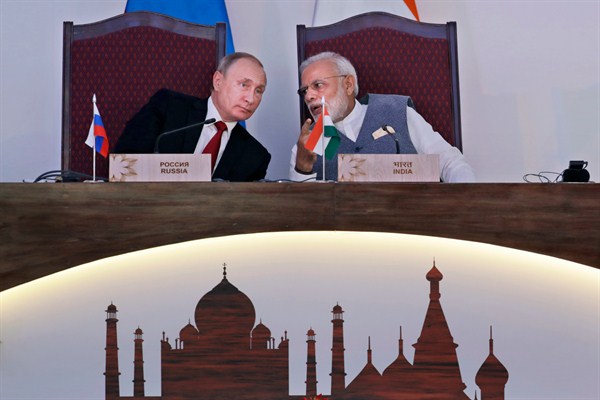Last month’s summit between India and Russia in Goa was held against the backdrop of New Delhi signing a logistics pact with the United States and Moscow conducting its first-ever joint military exercise with Pakistan. Perhaps to dispel the notion that the push-and-pull of geopolitics was straining the otherwise deeply rooted India-Russia relationship—this was the 17th annual summit—both Prime Minister Narendra Modi and President Vladimir Putin chose to reiterate the “special and privileged” nature of ties.
They matched their rhetoric by sealing a range of energy and defense deals that reflect their long-term strategic commitments, at a time when Russia’s economy remains sluggish and India is looking to modernize its manufacturing base. Both sides recognize that bilateral trade in nonstrategic sectors is flat and a boost is crucial for either country to emerge as a credible player in the Eurasia-wide economic integration being spurred by China. But that will depend in large part on India-Russia security coordination in Afghanistan at a time of rising India-Pakistan tensions and growing cynicism in the Russia-U.S. relationship.
The value and nature of the defense agreements probably gave Putin the confidence to declare just before the summit that “Russia remains in the lead in terms of both direct supplies of most advanced weapons and military equipment and conducting joint researches with India, as well as producing goods for military purposes.” The total value of the defense deals announced during the summit is around $10 billion up front. These included a $5.8 billion Indian purchase of five Russian S-400 air defense systems; a $3 billion project to procure four Talwar-class frigates for the Indian Navy, two of which would be built in Russia and two in India; and a $1 billion-plus joint venture—part of Modi’s “Make in India” industrial initiative—to produce 200 Ka-226 light helicopters for the Indian military, with the initial 40 being delivered from a Russian factory.

